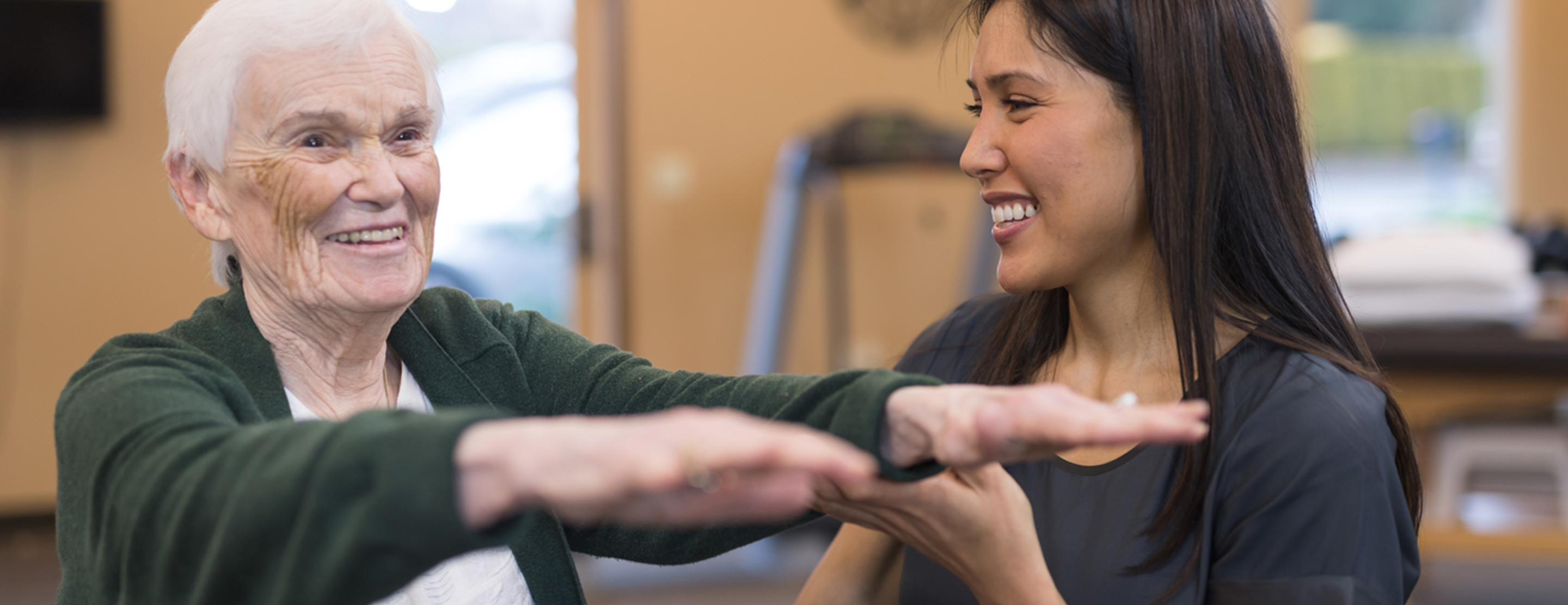
Balance Assessment
Overview
Balance assessment protocol at UCSF is made up of a number of subtests that examine the effectiveness and interaction of your vestibular system (the inner ear), and screens the somatosensory (flex and pressure sensors in your feet), and vision system contribution to your overall stability and balance. The assessment will help us determine which system may be contributing to your specific symptoms, and give direction for treatment. As specified by your referral and based on your symptoms and medical history, the assessment may include:
- Rotational chair
- Vestibular Evoked Myogenic Potential (VEMP)
- Video Head Impulse Test (vHIT)
- Videonystagmography (VNG)
- Assessment/Treatment of Benign Paroxysmal Positional Vertigo (BPPV)
Rotational Chair: The patient sits in a chair in a small, dark booth. Video goggles are placed near the eyes and a computer-driven chair rotates back and forth at various acceleration rates. The rotation stimulates the vestibular system and causes eye movements (nystagmus) that are recorded by a computer and monitored with an infrared camera. The rotary chair test is very useful when confirming a suspected loss of inner ear balance function in both ears and determining the extent of residual function. It is also helpful in providing information regarding status of central compensation in cases of unilateral or bilateral peripheral vestibular involvement.
VEMP: This is myogenic response from the muscles in a person's neck (sternocleidomastoid) or eyes, in response to high level acoustic stimulation. Based on evidence, it is believed the VEMP provides information from the otoliths (saccule or utricle) and the vestibular nerve. During this test a patient will have surface electrodes on his or her head and neck. He or she will recline in a chair and contract the neck muscles while listening to a loud clicking sound.
vHIT: The video head impulse test analyzes the vestibular-ocular reflex in response to small head movements similar to that of natural daily motion. The patient wears a pair of lightweight video goggles that record eye movement on a computer system.
The VNG/ENG evaluation is separated into three subtests.
Oculomotor: The first subtest assesses the visual system for balance, called the oculomotor system. In this test, measurements of the various voluntary or controlled eye movements are taken. This is achieved by completing a series of exercises while visually following a dot on a light bar.
Positional/Positioning: The second subtest is called the positional/positioning test, focusing on the vestibular system, which is the balance structure of the inner ear. During this part of the test, movement of the head and/or head and body is executed in order to monitor how the vestibular system reacts to these movements and to changes in gravity.
Calorics: The final subtest is called the caloric test. This measurement determines how well the vestibular system responds by applying warm and cool air into each ear canal separately. Comparisons are then made of the vestibular system’s performance from one side to the other, and whether a possible weakness or hyper-response may exist within the inner ear. During the caloric test, it is not unusual to experience a sensation of movement which goes away immediately following the completion of the caloric test.
UCSF Health medical specialists have reviewed this information. It is for educational purposes only and is not intended to replace the advice of your doctor or other health care provider. We encourage you to discuss any questions or concerns you may have with your provider.






